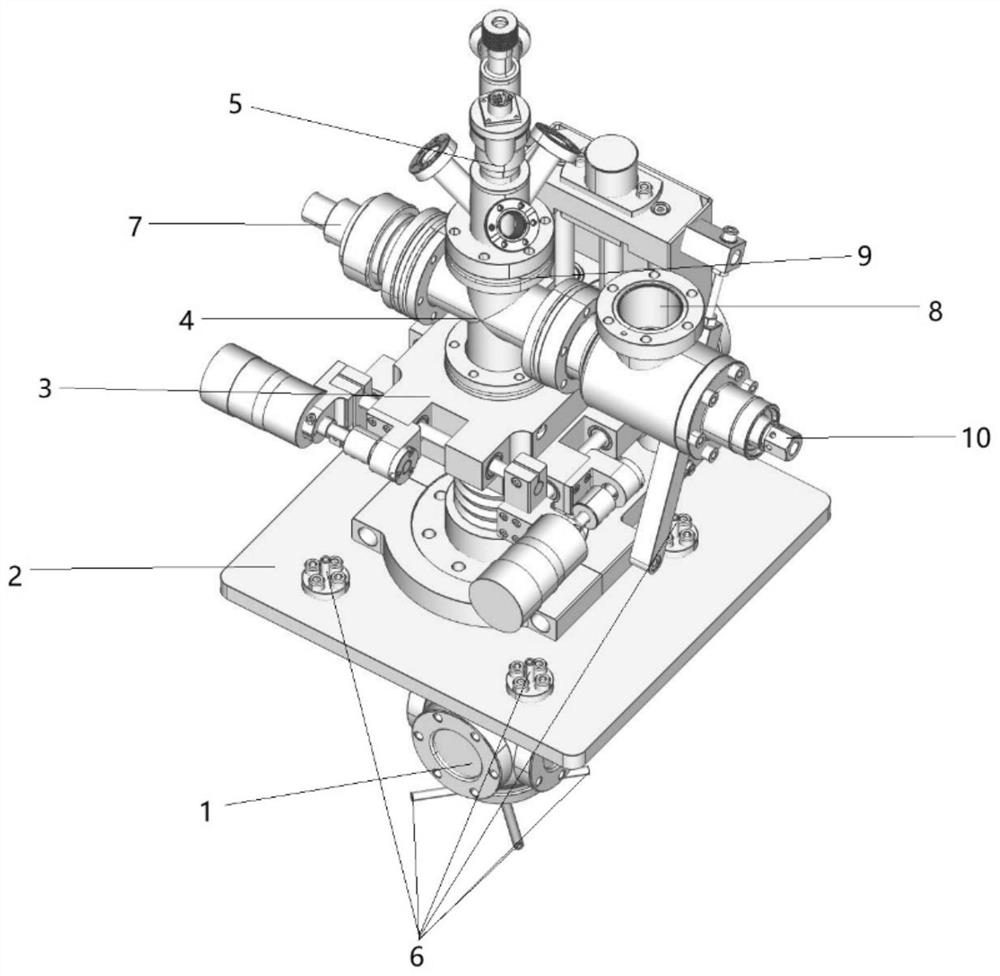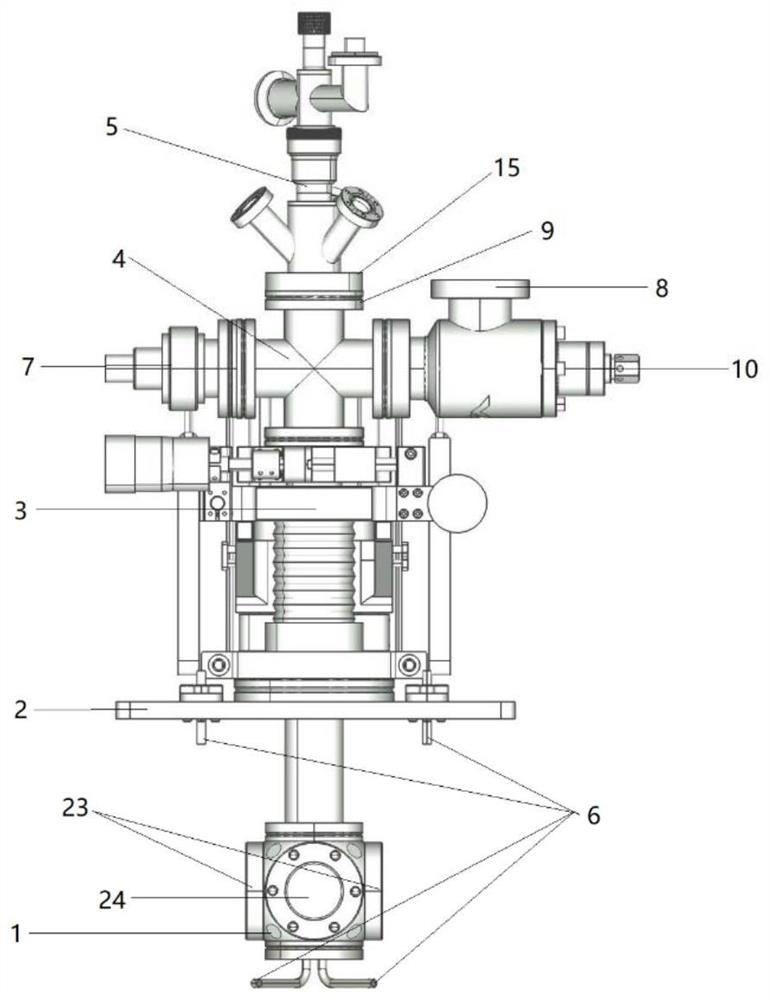A temperature-controllable infrared in-situ reaction cell based on high vacuum conditions from low temperature to high temperature
An in-situ reaction, infrared technology, applied in instruments, measuring devices, scientific instruments, etc., can solve the problems of the infrared cell being difficult to achieve high vacuum and low temperature, in-situ high temperature treatment of difficult samples, increasing sample consumption, etc., to prevent corrosion. , the effect of reducing the dosage and eliminating the interference of the air background
- Summary
- Abstract
- Description
- Claims
- Application Information
AI Technical Summary
Problems solved by technology
Method used
Image
Examples
Embodiment 1
[0057] Low temperature CO adsorption test of ZnO powder. First take a few milligrams of ZnO powder and press it on the center of a 2cm*1cm tungsten mesh. Install the tungsten mesh sample on the sample holder, and weld the thermocouple near the zinc oxide sample. Place the cold head on the three-dimensional translation stage, and rotate it to a suitable position so that the sample plane is perpendicular to the optical path, and seal and fix it with a copper gasket. Connect an external power supply and a K-type thermocouple thermometer. Turn on the molecular pump unit to evacuate the system, and add liquid nitrogen to the cold head cold trap when the vacuum drops to a certain level. After the sample is degassed through the external power supply parameters, the background is collected after returning to the liquid nitrogen temperature. Use leak valve to feed 10 -3 After mbarCO, the spectrum was collected, and the CO adsorption peak was obtained as shown in the figure. After ...
Embodiment 2
[0059] SiO 2 The supported PtFe catalyst is pressed on the tungsten grid and loaded. After installation, vacuum the system to the proper pressure. Close the suction angle valve and let H 2 And turn on the heating power to carry out activation pretreatment on the sample. After the treatment, the angle valve was opened to evacuate the system, and the temperature was naturally cooled to room temperature, and the background was collected under vacuum. Use a leak valve to feed 10 mbar CO to saturation, then evacuate and collect spectra to obtain the infrared signal of CO adsorbed on the surface. At this time, use the leakage valve to feed and maintain 5*10 -4 mbar oxygen, continuous spectrum collection can get the weakening of the surface CO infrared signal, and thus obtain the CO reaction rate on the surface of the PtFe catalyst, see Figure 6 .
Embodiment 3
[0061] Vapor deposition of CeO on silicon wafers 2 The thin film sample is coated with water and mounted on the sample holder. After installing the cold head, in N 2 The spectrum was collected under atmospheric pressure. After turning on the molecular pump group, pump the cavity to a vacuum of 10 -6 mbar, get spectrum again to get H 2 O in CeO 2 of chemical adsorption.
PUM
 Login to View More
Login to View More Abstract
Description
Claims
Application Information
 Login to View More
Login to View More - R&D
- Intellectual Property
- Life Sciences
- Materials
- Tech Scout
- Unparalleled Data Quality
- Higher Quality Content
- 60% Fewer Hallucinations
Browse by: Latest US Patents, China's latest patents, Technical Efficacy Thesaurus, Application Domain, Technology Topic, Popular Technical Reports.
© 2025 PatSnap. All rights reserved.Legal|Privacy policy|Modern Slavery Act Transparency Statement|Sitemap|About US| Contact US: help@patsnap.com



